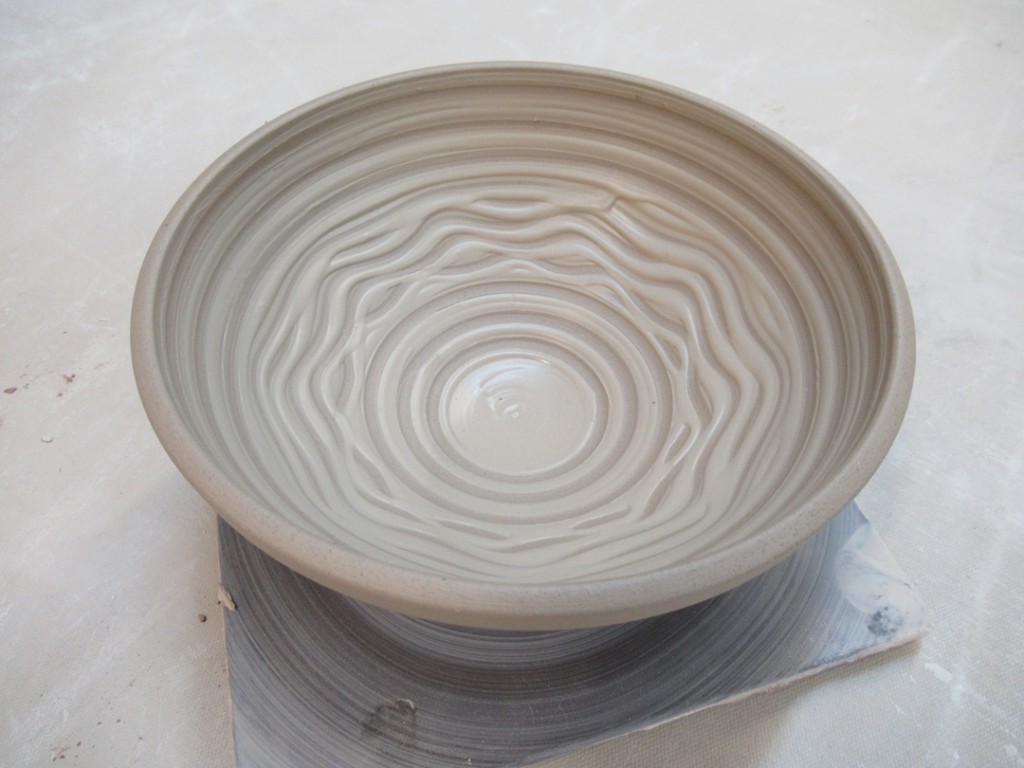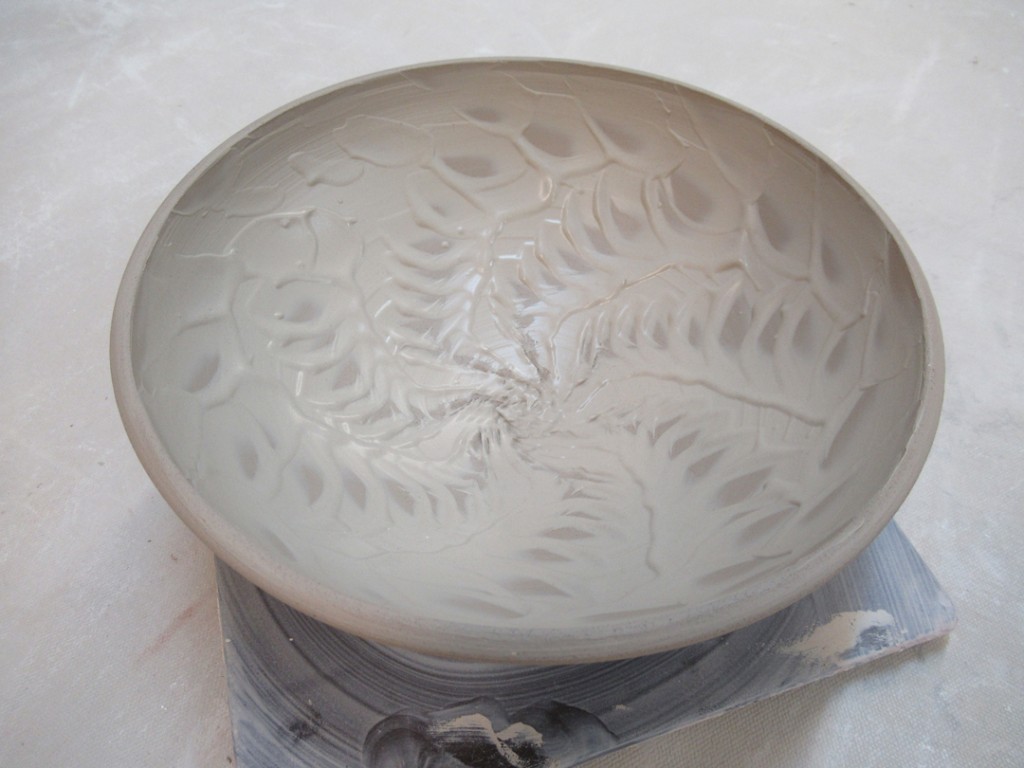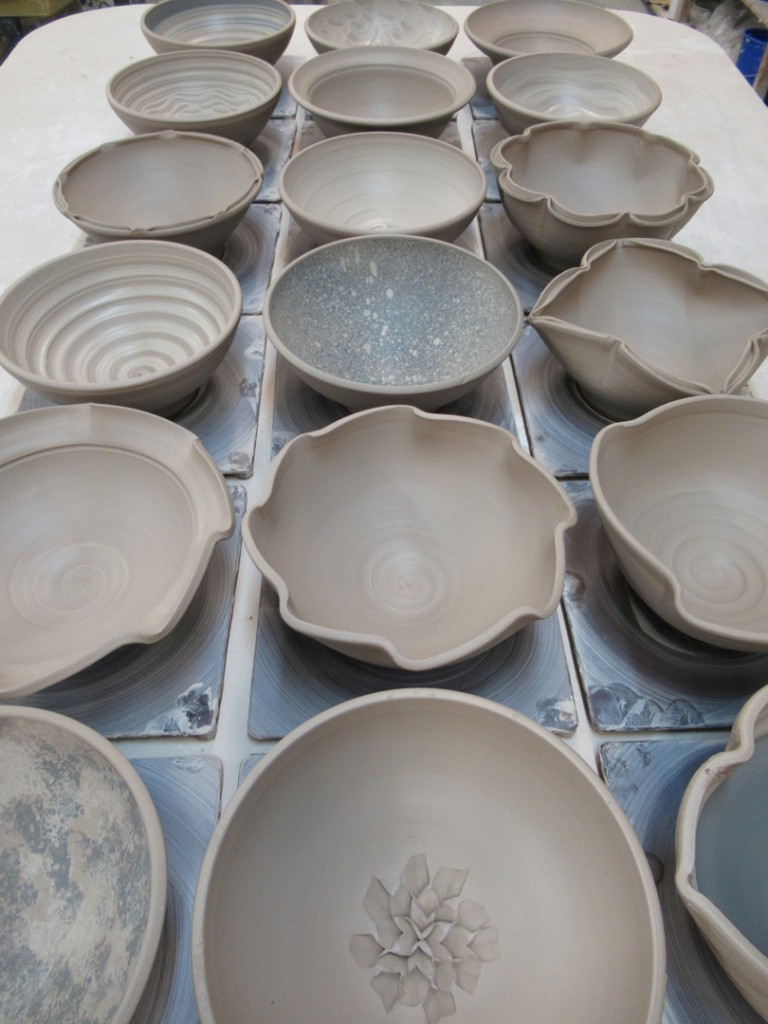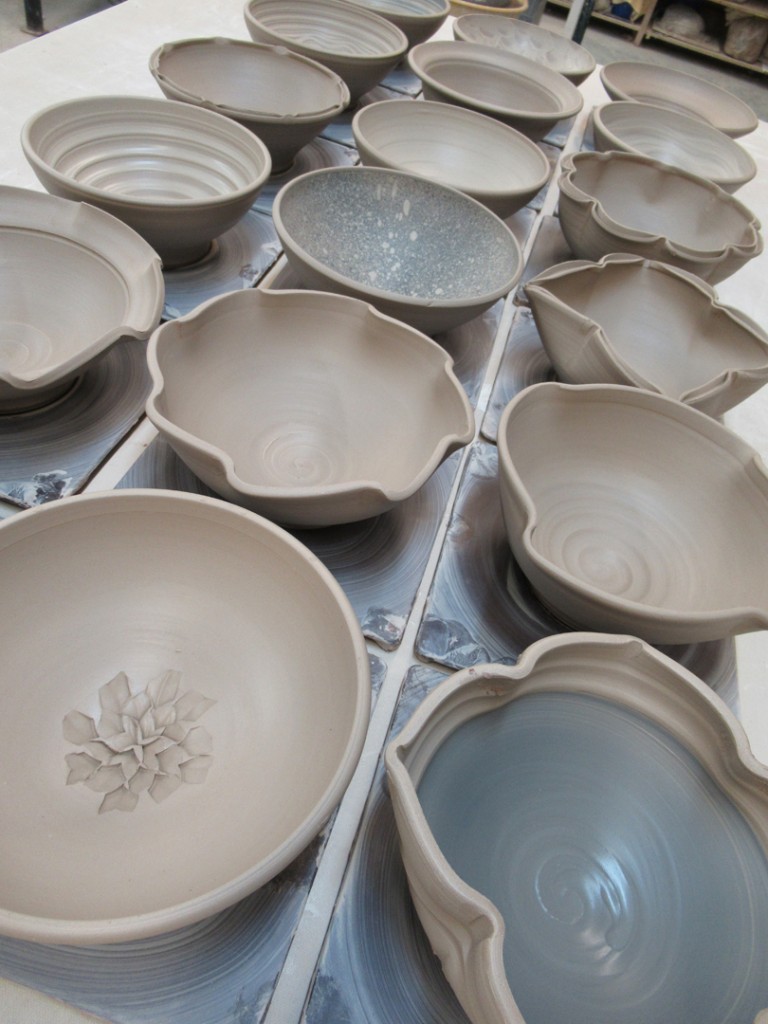So this week in my pottery class we tackled BOWLS!!!
And not just ANY bowls, but bowls on purpose… and not just a cylinder gone bad!!!
So many beginners are making bowls by accident. But tonight we started doing them on purpose from the very start. I did a bowl throwing demo for my students showing them the “right way” to make a basic round bowl. And then I “released” them back to their wheels to start throwing bowls. While they were working, I threw 18 bowls in total… apparently that’s what a bag of reclaim clay makes?!
After I had made all eighteen “basic” bowls… we re-grouped for the fun part of the demo! I showed them a lot of quick tricks on how to make their bowls “not-so-basic” anymore! We altered rims, did some texturing and I introduced colored slip as a decorative option. Ultimately I just wnat my students to learn to play with their clay, try new things and try to make it their own. Sure, almost anyone can make a round bowl. The wheel kinda does it for you. But the fun part is decorating it and making it your own!!!

Bowl #1 – Fluted Rim.
One finger inside, one finger outside, pinch & twist.

Bowl #2 – Fluted Rim again.
Because if four is good, eight might be better?

Bowl #3 – Narrow Flange.
Basically keeping a finger steady on the outside an inch lower than the rim, and then the inside hand gently bends the rim out over the stationery hand while spinning on the wheel.

Bowl #4 – Wider Flange.
Because if a narrow flange is cool, a wider one might be better?

Bowl #5 – Flared & Fluted Flange Combo.
Bend the flange out first, and then come back to flute the edges.

Bowl #6 – Dragonscale Tool.
I have a cool metal tool designed for dragon or fish scales.
But it also works well to make this sort of flower effect in the bottom of a bowl.

Bowl #7 – Split Rim Pinched Together.
I start by splitting the rim carefully with the sharp point of my wooden knife.
Then I go back and pinch it back together in a few spots.

Bowl #8 – Split Rim Dented In.
Again, carefully split the rim, an then use the side of my wooden knife tool to dent inwards in eight places.

Bowl #9 – Split Rim In & Out
Another split rim, this time dented in for four, and out for four… which kind of squares it up a bit. Who says bowls need to be round???

And then I introduced colored slip to my class. We talked about some of the benefits of using slip now, as opposed to trying to glaze certain tings later. The we started playing with some thick white slip…
Bowl #10 – Thick White Slip Spiral
Simply coated the inside and then dragged a saturated brush of slip through it to make the spiral. The extra thickness will remain there through the bisque firing… and then show up even more when the glaze puddles & pools there.


Bowl #11 – Thick White Slip Spiral
Again I coated the inside of the bowl with a layer of thick white slip. And then I just dragged the rounded end of a tool through while the wheel was spinning. Easy-peezy!

Bowl #12 – Finger Squiggles
Same thick white slip… but finger painting to make the squiggles!


Bowl #13 – Thick White Slip Bands & Squiggles
So I combined the perfect banding with the imperfect squiggles. Banded first, squiggles to fill.


Bowl #14 – Chattered White Slip.
Another layer of thick white slip… and then some decorative chattering through the slip while the wheel is spinning. Chattering is basically rhythmic tapping of a plastic rib through the slip to reveal the clay body.

And if white slip is good, maybe TWO slips would be better???... so we added Black!
Bowl #15 – Black & White Ombre With Spiral.
I did the layer of white first, and then carefully blended a layer of black slip over it to create an ombre gradation. And then I dragged the rounded end of my wooden knife through the slip up & out. And I’m TOTALLY LOVING that fun little swoosh at the end… completely unplanned!!!



Bowl #16 – Shaped Rib With In-Dents & Out-Dents.
I used a decorative wooden rib pressed into the sides to create some grooves, then dented in & out, and then filled the bottom section with black slip.

Bowl #17 – Sponge Painting
This time I used a sea sponge to dab on layers of white & black slips. I’m kinda diggin’ the granite-marble sort of effect.

Bowl #18 – Splattered Slip
For this one I used a special little tool I found a few years back to splatter paint, slip or glaze. So I did a layer of splattered white, then a layer of black… and went back on to do some more black… and then some white… until I felt it was perfectly un-perfect!


And for now I have eighteen bowls to finish up. I’m fairly confident there will be some stamping, texturing, and further altering of these bowls. More is more, right?! And then after that, they will all need to be trimmed, fired, glazed and fired again!









